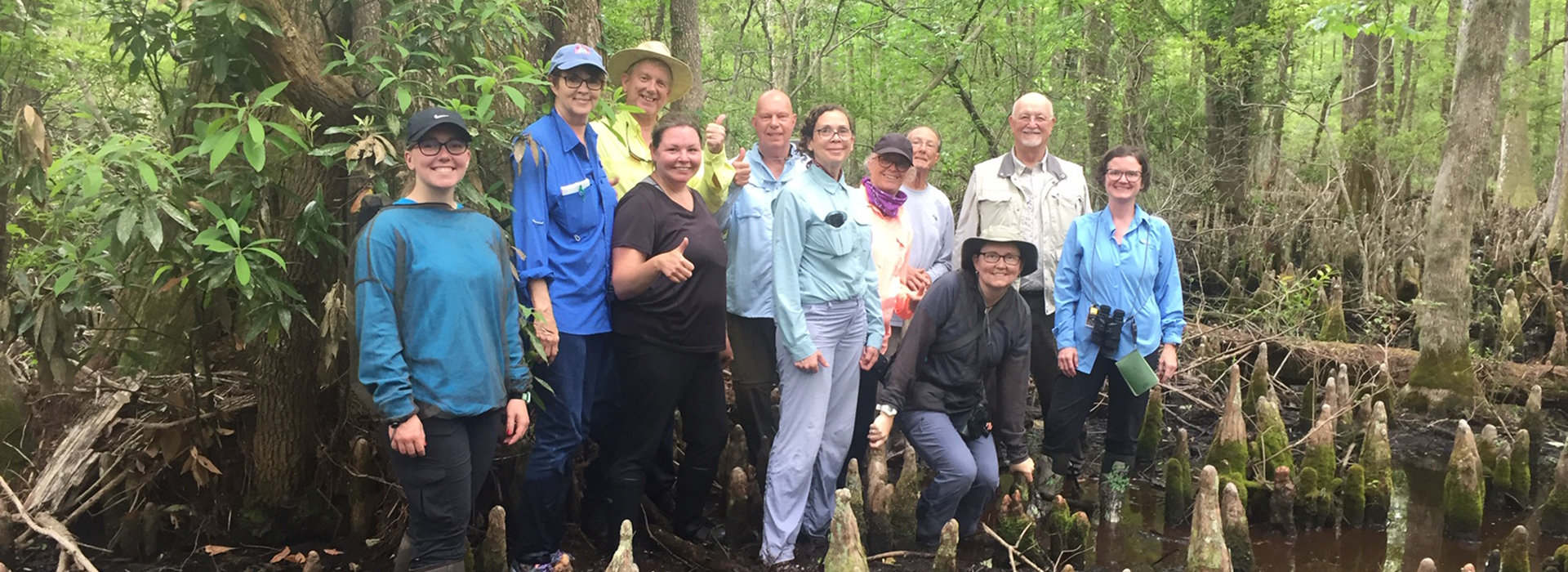They waded through the surf at Huntington Beach State Park and trekked through swamps on Hobcaw Barony. They got muddy and pinched by crabs in the North Inlet marsh. They found carnivorous plants and giant cypress knees in a mysterious Carolina bay. They stood in a swamp in the dark.
Congratulations to the latest 10 graduates of the Winyah
Master Naturalist program!
The Winyah Master
Naturalist Program provides field-based training for community members to develop
the skills necessary to become active stewards of our coastal habitats. Since
the first class was offered in 2007, 113 participants have completed the
12-week course facilitated by the NI-WB Reserve. The Reserve is one of six host
sites of the South Carolina Master Naturalist Program.
Environmental education programs such as the Master
Naturalist Program help to strengthen links between knowledge and action and
promote community involvement in stewardship activities including research,
education and activism. Graduates of the course monitor sea turtle nests, study
painted buntings, explore the salt marsh with school groups, and lead community
efforts to protect our coastline. They volunteer for stewardship activities
such as beach sweep and river sweep. They are on hand to help the Reserve when
we need assistance with education events or sampling for research projects.
Non-professional naturalists have a long history of
contributing observations that help to inform conservation actions. Before
science became a profession in the 19th century, amateur naturalists were
collecting data on rainfall, bird behavior, and bloom times. They were describing
in detail flowers, mushrooms, and sea creatures, conducting experiments in
their gardens, and curating collections that would become the centerpieces of
natural history museums. Over a century’s worth of data collected by volunteer observers
during the Christmas Bird Count, a tradition begun by the Audubon Society in
1900, has provided researchers, conservation biologists, and wildlife agencies
with vital information on the long-term health and status of bird populations
across North America. And the trend continues; a recent study in Europe found
non-professional taxonomists were responsible for more than 60 percent of new multicellular
land and freshwater animal species descriptions from 1998 to 2007.
Having a corps of trained stewardship volunteers is becoming
increasingly important in meeting the conservation challenges of our coast. Volunteer
researchers and educators are providing critical services at a time when
funding for these activities can be sparse. Additionally, participants in
stewardship programs gain a deeper experience in understanding the issues and
can become the best advocates for conservation actions in our community.
For more information
on the Winyah Master Naturalist course, please visit?



